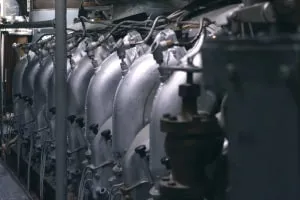
Fundamentals of Diesel Engines 
Get a comprehesive understanding of Fundamentals of Diesel Engines. This is a free course from Alison. AZ Class provides this course data for free. Learn more certificate and details here. Discover the inner workings of diesel engines with the course 'Fundamentals of Diesel Engines'. Learn about the thermodynamic cycles and operation of internal combustion engines, comparing the cycles of modern and early 1900s diesel engines. Explore the classifications, features, and timing diagrams of diesel engines, as well as the calculation of engine power. Dive into the construction and assembly of two-stroke and four-stroke engines, including the vital components and constructional features. Become an expert in techniques for reducing liner wear and supplying oil to the crosshead. Perfect for marine and mechanical engineering students, register for this course today and unlock the secrets of diesel engines. ▼
ADVERTISEMENT
Course Feature
![]() Cost:
Cost:
Free
![]() Provider:
Provider:
Alison
![]() Certificate:
Certificate:
No Information
![]() Language:
Language:
English
Course Overview
❗The content presented here is sourced directly from Alison platform. For comprehensive course details, including enrollment information, simply click on the 'Go to class' link on our website.
Updated in [October 07th, 2023]
What does this course tell?
(Please note that the following overview content is from the original platform)
‘Fundamentals of Diesel Engines’ introduces you to the operation of internal combustion engines and the thermodynamic cycles of diesel engines. Along with teaching you the theoretical cycle guiding the operation of modern diesel engines, we will compare how the Otto, diesel and dual combustion cycle operated in diesel engines of the early 1900s. The course introduces the various classifications of diesel engines, the features of the piston stroke, and the characteristics of the supercharging or turbocharging terminology in marine diesel engines. It will also explain the timing diagrams of a diesel engine, the engine cycle, the complete series of separate steps or events essential for efficient engine operation, and how a diesel engine develops power by fuel combustion in its cylinders. Have you ever wondered how to calculate the power of an engine? This course touches on calculating the theoretical power and measuring the brake power of an engine with a hydraulic dynamometer.
Shipowners prefer single-engine/single-propeller designs. This course explains their reasoning, how the RTA96C-14 engine can achieve a maximum power output of 108,920 hp at 102 rpm, and how the engine exceeds 50 percent thermal efficiency at the maximum economy. Explore the vital component parts of two-stroke engines; the construction of bedplate, frame box, cylinder frame; and the constructional features of two-strokes, along with detailing four-stroke engines used onboard ships. Discover how you can assemble the individual parts. In addition, the material explains the construction of the cylinder cover and the mountings of a two-stroke diesel engine, including the features of the safety valve, fuel valves, indicator valves, and how the cylinder cover seals the upper end of the cylinder space. You will also learn the constructional features of the crosshead, connecting rod and bearings of a two-stroke diesel engine.
Become an expert in the techniques for using the crosshead in large two-stroke marine diesel engines to ease the side thrust by reducing the liner wear. The course continues by explaining the concept of the Sulzer RTA engine connecting rod, the process of the cross-head bearing, the features of the Sulzer engine bearings and lubrication. Learn how you can supply oil to the crosshead through telescopic pipes in MAN B&W engines. The course examines the engine structure, fixed parts that hold the engine together, support and keep the moving parts in alignment, and how the parts resist the pressures due to engine operation. It also demonstrates the internal forces resulting from engine fluctuations in torque, combustion gas forces, or guide forces. It then discusses how an engine structure offers rigidity and strength to ensure crankshaft stresses are minimal and maintain the perfect alignment of piston and running gear. This course will be of great interest to marine engineering students and anyone fascinated with diesel engines in general such as mechanical engineering students. So, register for this course and begin the learning process today.
We considered the value of this course from many aspects, and finally summarized it for you from two aspects: skills and knowledge, and the people who benefit from it:
(Please note that our content is optimized through artificial intelligence tools and carefully reviewed by our editorial staff.)
What skills and knowledge will you acquire during this course?
During the course 'Fundamentals of Diesel Engines', learners will acquire the following skills and knowledge:
1. Understanding the operation of internal combustion engines and the thermodynamic cycles of diesel engines.
2. Comparing the Otto, diesel, and dual combustion cycles operated in diesel engines of the early 1900s.
3. Familiarity with the various classifications of diesel engines and the features of the piston stroke.
4. Knowledge of supercharging or turbocharging terminology in marine diesel engines.
5. Understanding the timing diagrams of a diesel engine and the engine cycle.
6. Comprehension of the complete series of separate steps or events essential for efficient engine operation.
7. Understanding how a diesel engine develops power through fuel combustion in its cylinders.
8. Calculation of the theoretical power and measurement of the brake power of an engine with a hydraulic dynamometer.
9. Understanding shipowners' preference for single-engine/single-propeller designs and the reasoning behind it.
10. Knowledge of the RTA96C-14 engine and its maximum power output and thermal efficiency.
11. Understanding the vital component parts and constructional features of two-stroke engines.
12. Knowledge of the construction of the cylinder cover and the mountings of a two-stroke diesel engine.
13. Understanding the constructional features of the crosshead, connecting rod, and bearings of a two-stroke diesel engine.
14. Expertise in using the crosshead in large two-stroke marine diesel engines to reduce liner wear.
15. Understanding the concept of the Sulzer RTA engine connecting rod and the features of Sulzer engine bearings and lubrication.
16. Knowledge of supplying oil to the crosshead through telescopic pipes in MAN B&W engines.
17. Understanding the engine structure and its role in supporting and aligning moving parts.
18. Knowledge of internal forces resulting from engine fluctuations and their impact on engine structure.
19. Understanding how an engine structure provides rigidity and strength to minimize crankshaft stresses and maintain alignment.
20. Suitable for marine engineering students and mechanical engineering students interested in diesel engines.
By completing this course, learners will have a comprehensive understanding of the fundamentals of diesel engines and their operation.
Who will benefit from this course?
This course on the fundamentals of diesel engines will benefit individuals who are interested in or pursuing careers in marine engineering or mechanical engineering. Specifically, it will be of great interest to marine engineering students who want to gain a comprehensive understanding of diesel engines used onboard ships. Mechanical engineering students who are fascinated with diesel engines in general will also find this course valuable.
The course covers a wide range of topics related to diesel engines, including the operation of internal combustion engines, thermodynamic cycles of diesel engines, classifications of diesel engines, features of piston stroke, supercharging and turbocharging terminology, timing diagrams, engine cycle, power calculation, and measuring brake power. It also delves into the construction and assembly of two-stroke and four-stroke engines, including the individual parts, cylinder cover, mountings, crosshead, connecting rod, and bearings.
Shipowners who prefer single-engine/single-propeller designs will benefit from understanding the reasoning behind this preference and learning about the RTA96C-14 engine, which achieves high power output and thermal efficiency. Individuals interested in the techniques for using the crosshead in large two-stroke marine diesel engines to reduce liner wear and ease side thrust will also find this course valuable.
Course Syllabus
Fundamental Principles of Diesel Engines
In this module, you will be introduced to the fundamental principles of diesel engines, as well as the types and theoretical cycles of diesel engines. You will also be introduced to the important diesel engine terminologies, as well as the timing diagram and power efficiency process in marine diesel engines.Main Diesel Engines
In this module, you will be introduced to the constructional features of two-stroke and four-stroke diesel engines used onboard ships. You will also be introduced to cylinder cover and mountings as well as the construction of cylinder cover and mountings of a two-stroke diesel engine.Course assessment
Course Provider
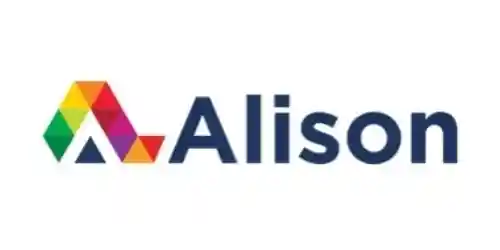
Provider Alison's Stats at AZClass
Discussion and Reviews
0.0 (Based on 0 reviews)
Explore Similar Online Courses
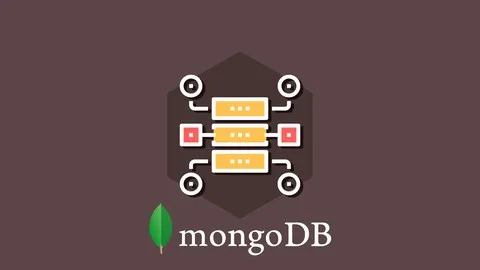
MongoDB Essentials - Understand the Basics of MongoDB

How to Use Garden Herbs

Python for Informatics: Exploring Information

Social Network Analysis

Introduction to Systematic Review and Meta-Analysis

The Analytics Edge

DCO042 - Python For Informatics

Causal Diagrams: Draw Your Assumptions Before Your Conclusions

Whole genome sequencing of bacterial genomes - tools and applications
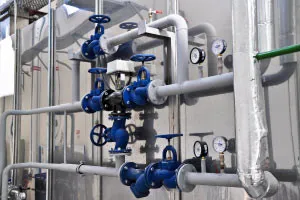
Industrial Engineering - Control Valve Basics
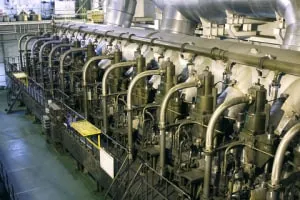
Diploma in Marine Diesel Engines
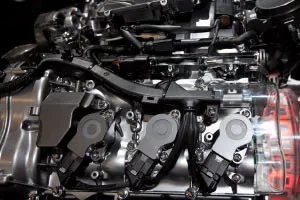

Start your review of Fundamentals of Diesel Engines